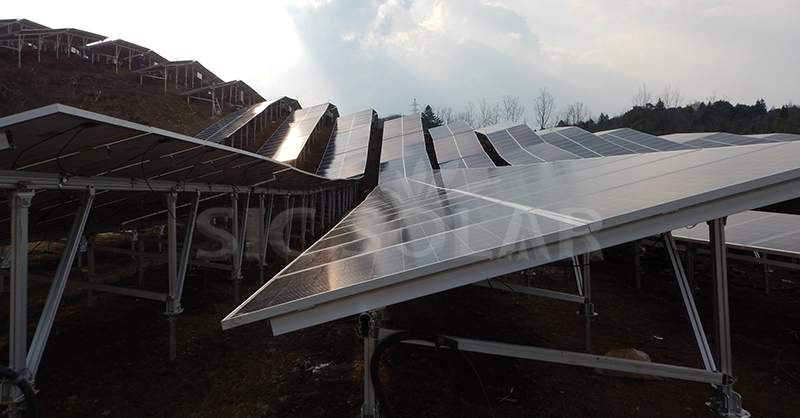Ground mounted solar systems are widely used in residential, commercial, and utility-scale projects where roof space is limited or where full design flexibility is needed. Unlike rooftop systems, ground-mounted arrays can be oriented and tilted, which generally means higher efficiency and easier maintenance.

1. Site Assessment and Planning
- Before any installation begins, the selected land must be surveyed to assess soil conditions, shading, orientation, and slope. Flat or gently sloping sites with full sun are ideal. The size, tilt angle, and spacing of the system are calculated based on the available land and expected energy output.
- Permits and zoning approvals must also be obtained according to local regulations. Environmental conditions such as wind loads, snow accumulation, and soil type all affect the design of the support structure. Proper drainage planning is essential, especially in areas with frequent heavy rains.
2. Choose a Mounting System
- Ground-mounted solar panels are typically installed using piled, screwed, or concrete foundation systems. The specific choice depends on the soil composition and project requirements.
- Piled systems are common in large utility projects. Steel posts are driven directly into the ground, eliminating the need for concrete, making installation quick and cost-effective in hard soils.
- Anchor screws are an alternative for soft or rocky terrain, providing good stability without extensive excavation.
- Concrete foundations can be used when soil is not suitable for pile driving. Although more labor-intensive, concrete foundations provide reliable anchoring for long-term performance.
- SIC Solar is a solar mounting structure manufacturer and supplier that offers a variety of ground-mount solutions to meet the needs of various terrains and system sizes. Its aluminum and galvanized steel materials are carefully designed to withstand environmental stresses while simplifying on-site assembly.
3. Prepare the Foundation
- Once the type of installation is selected, the foundation work begins. For pile or screw foundation systems, heavy machinery is used to anchor the brackets to the ground according to the layout design. For concrete systems, the foundation is excavated, rebar is installed, and then concrete is poured to form the foundation.
- Accuracy in foundation placement is critical, as misaligned anchors can affect the integrity of the structure and make it difficult to install brackets and components. In uneven areas, ground leveling may be required to maintain consistent tilt angles and row spacing.
4. Install the Mounting Structure
- Once the foundation is in place, horizontal rails or beams are attached to the vertical supports. These rails will support the solar panels and must be precisely aligned to ensure even placement of the modules.
- For long-term durability, corrosion-resistant materials such as hot-dip galvanized steel or anodized aluminum are preferred. Structural components must also accommodate expansion and contraction caused by temperature changes, especially in large installations.
5. Install the Solar Panels
- Once the supports are ready, the solar panels are placed on the rails and secured using intermediate and end clamps. The lines are then connected (usually in series) and the DC cables are routed through protective conduits to the inverter.
- Proper row spacing is critical to avoid shading between rows. Minimum clearance is based on calculations of the sun angle for a specific location. Solar panels should also be mounted at an angle to maximize solar radiation while allowing for self-cleaning and drainage.
- SIC Solar offers mounting systems designed to maintain a consistent tilt and securely attach in strong winds and snow-prone environments. Their structure kits often come with cable management accessories and pre-drilled components to simplify installation.
6. Inverter and electrical connections
- After the modules are installed, an inverter is installed to convert the DC power into usable AC power. Depending on the system design, string inverters, microinverters, or central inverters may be used.
- All electrical connections must meet safety standards and be properly grounded. Monitoring systems are usually installed to track performance and detect faults. Once testing is complete and final inspections are approved, the system can be operated on-grid or as part of an off-grid system.
